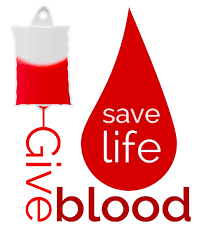Cats As Blood Donors

What do ailing people and ailing animals often have in common? The need for life-saving blood transfusions.
And when it comes to pet transfusions, it can be particularly difficult to find donors. This is why an increasing number of veterinary clinics are calling on caring cat owners to consider registering their kitties as blood donors. It’s why most veterinary colleges have a blood donor program, with some even having their own resident donors. It’s also why many of these colleges are looking for cats (and their humans) willing to participate in a donor program as well.
Unlike dogs who have more than fourteen blood types, cats have only three: A, B and AB.
And unlike humans, there are no universal donors or universal recipients when it comes to feline blood types. If a cat receives a transfusion of the wrong type of blood, it could prove fatal.
In cats, type A is the most common, type B is uncommon, and type AB is very rare. For your own cat’s protection and your peace of mind, consult with your vet, who will either type her blood for you or refer you to a lab to perform the test.
And if you’re thinking of registering your cat as a much needed and most appreciated blood donor, she must meet certain requirements. One is that she be an indoor-only cat. Those allowed to roam free outside are considered too high-risk to be donors.
She must be healthy and up-to-date on her vaccinations. If she’s taking any regular medication(s) other than flea, tick and heartworm preventatives, she won’t be eligible to donate. Most blood banks have certain age (2 to 6 years old) and weight requirements (above 10 pounds but NOT overweight) for donors. They also prefer cats who are fairly friendly and are comfortable with being handled — to prevent undue stress on both the staff and the animals.
If your kitty meets all of the requirements and is ready to donate, you’ll have to ensure that she’s properly prepared beforehand. To keep her comfortable and calm, she’ll be lightly sedated during the procedure, which means she can’t eat preceding it, but she can be fed the night before. You may, however, make water available to her right up until the donation itself. In fact, the better hydrated she is, the smoother the process is likely to be.
Collecting your cat’s blood (usually two ounces) will take only about 10-15 minutes, but because of the sedation, recovery and aftercare, the entire process may take several hours. Many pet parents drop off their cats, along with a favorite toy or blanket, and return for them later. In most cases, your kitty will be fed at the donation center shortly after the procedure.
Like human blood donors, cat blood donors can be lifesaving heroes for other cats in urgent need of transfusions. And if your kitty becomes just such a donor, both of you will have the heartfelt gratitude of emergency vets and anxious pet owners throughout your communit


